Over the past week, we have seen multiple articles like the following from The West Australian complaining about the decline in housing affordability, which has left residents struggling to pay mortgages or rent.
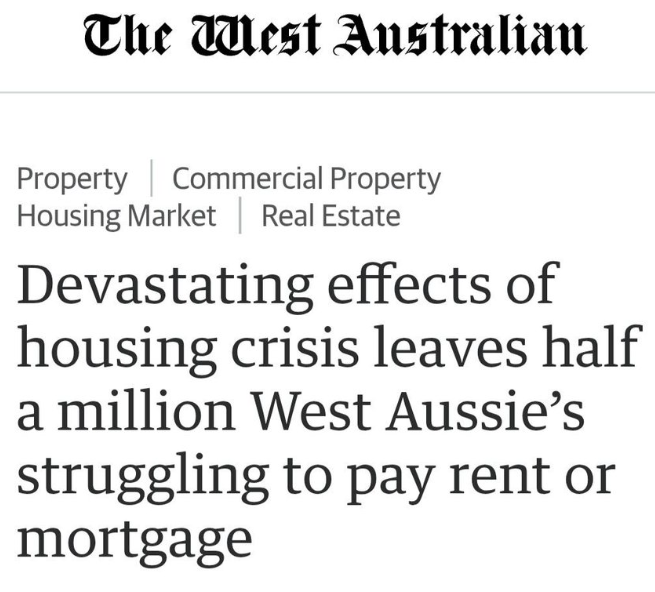
These articles are based on the latest Housing Affordability Report from the Bankwest Curtin Economics Centre, which blames a ‘lack of supply’ for the state’s housing crisis.
“I think the fundamental challenge that we’re facing is simply that there are not enough houses to go around”, Alan Duncan, Director of the Bankwest Curtin Economics Centre, said.
“We are witnessing a breakdown in the ability of WA’s housing system to meet the needs of ordinary West Australians”.
“There’s an awful long way to go before the housing system gets anywhere near back to balance”, Duncan said.
ABC Radio Perth hosted a “debate” on housing affordability and the impact of net overseas migration.
The panel was rigged in favour of mass immigration, featuring:
- Bank economist Alan Duncan, director of the Bankwest Curtin Economics Centre, whose business model involves expanding loans to a housing market where prices never fall.
- A minister (Anne Aly) in a government that crows about having GDP grow for the last three years when it fell for nine quarters of those years.
- A lawyer (Sarah Frankel) whose livelihood involves working with immigrants.
The only naysayer was Peter Strachan, National President, Sustainable Population Australia.
As usual, Labor MP Anne Ali immediately referenced race and ethnicity, seemingly to caution against any criticism of the unsustainable population rise.
To save you from wasting your time watching this “debate”, let me lay the numbers out clearly.
Net overseas migration (NOM) has overwhelmingly driven Western Australia’s population growth.
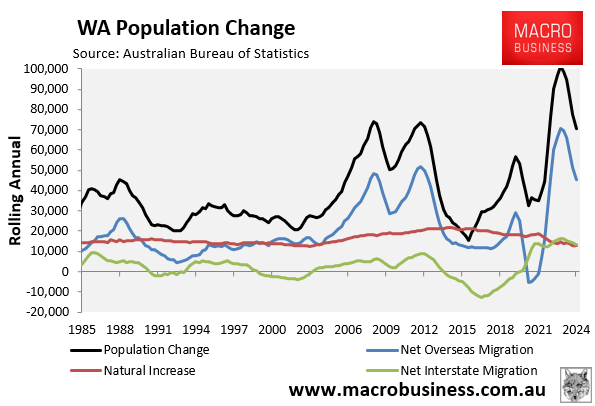
Western Australia’s NOM was 45,100 in the year to Q4 2024, contributing to 64% of total population growth (70,300). Of course, migrants also have children, which counts as natural increase.

NOM is officially projected by the state government to comprise nearly two-thirds of Western Australia’s total population growth over the coming decade:
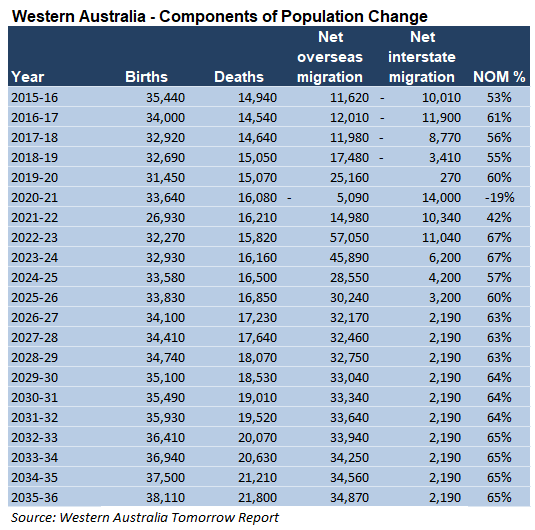
The state government projected that NOM would drive an increase of 775,500 in Western Australia’s population between 2022 and 2036. Again, migrants have children, so they also contribute to natural increase.
Meanwhile, dwelling completions are failing to keep pace:

In the year to Q4 2024, only 20,500 dwellings were completed in Western Australia, versus a 70,300 increase in the population.
Therefore, anyone who blames a ‘lack of supply’ for the housing shortage in Western Australia is being dishonest. The primary problem is excessive immigration demand.
This circus is being replicated at the national level, where Australia has built significantly more homes in the past 15 years than in the 15 years prior.
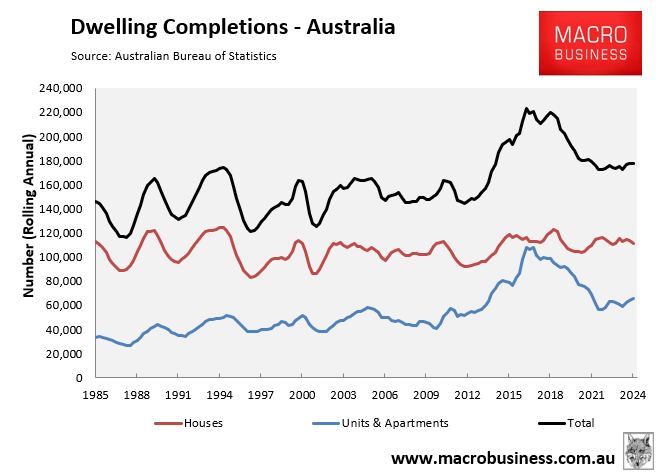
However, Australia’s population growth jumped after net overseas migration more than doubled from 2005.

Australia’s net overseas migration averaged 90,000 annually in the 60 years following World War II and only exceeded 150,000 in two of those years.
Since 2005, Australia’s net overseas migration has averaged 226,000 annually, a 150% increase on the 60-year average following World War II.
The National Housing Supply and Affordability Council’s (NHSAC) latest projections suggest that Australia’s housing completions will remain well below the Albanese government’s annual construction target of 240,00o homes.
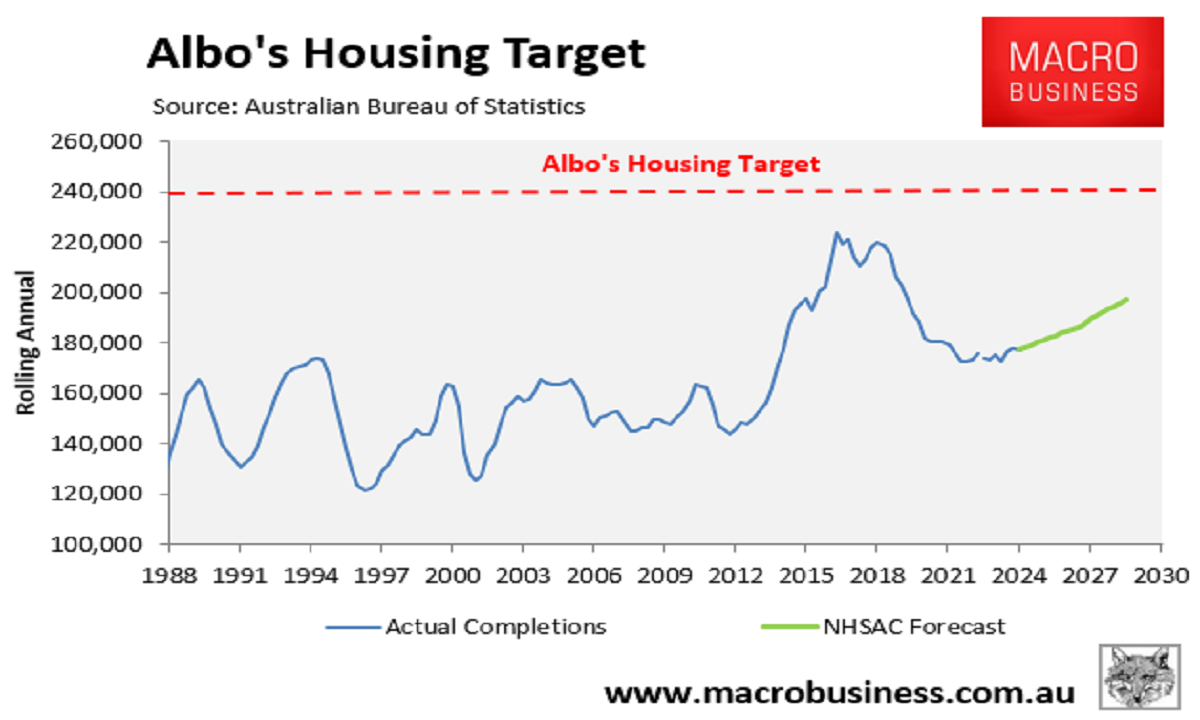
Meanwhile, population growth (read immigration) is forecast by NHSAC to remain historically high, resulting in Australia’s housing shortage worsening by 79,000 dwellings over five years.
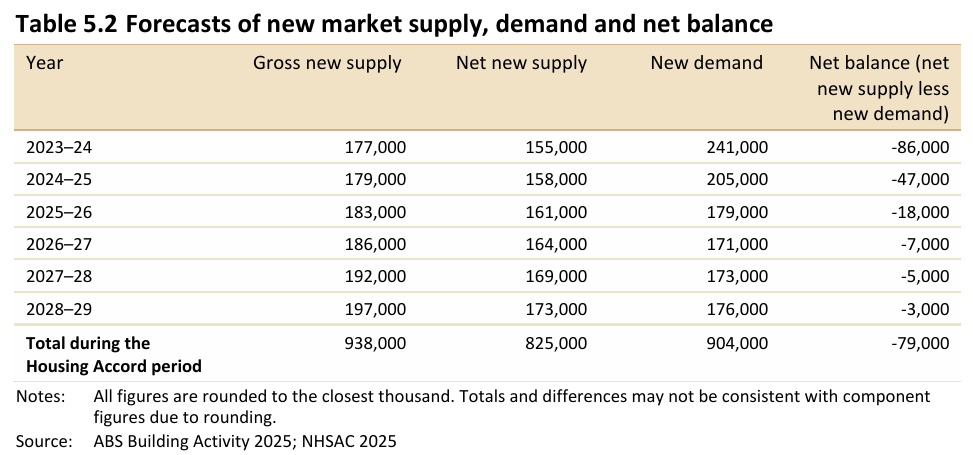
NHSAC’s own sensitivity analysis shows that if Australia’s population grew by just 15% less than forecast over the next five years, then Australia’s projected 79,000 housing shortage would turn into a 40,000 surplus:
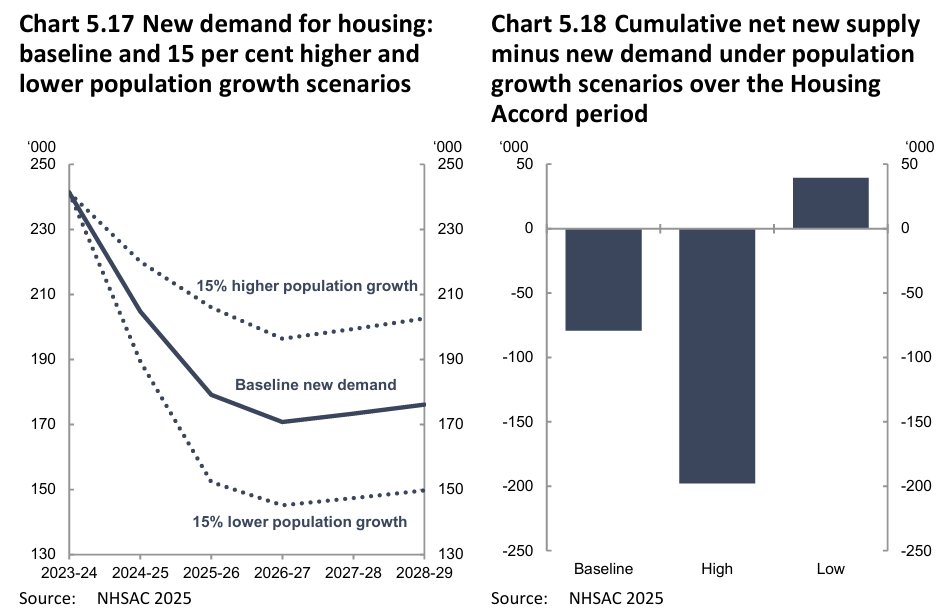
Again, it is the demand side, stupid!
NHSAC’s sensitivity analysis proved that the primary solution to Australia’s housing crisis is to moderate demand by running a sensible, sustainable immigration program.

